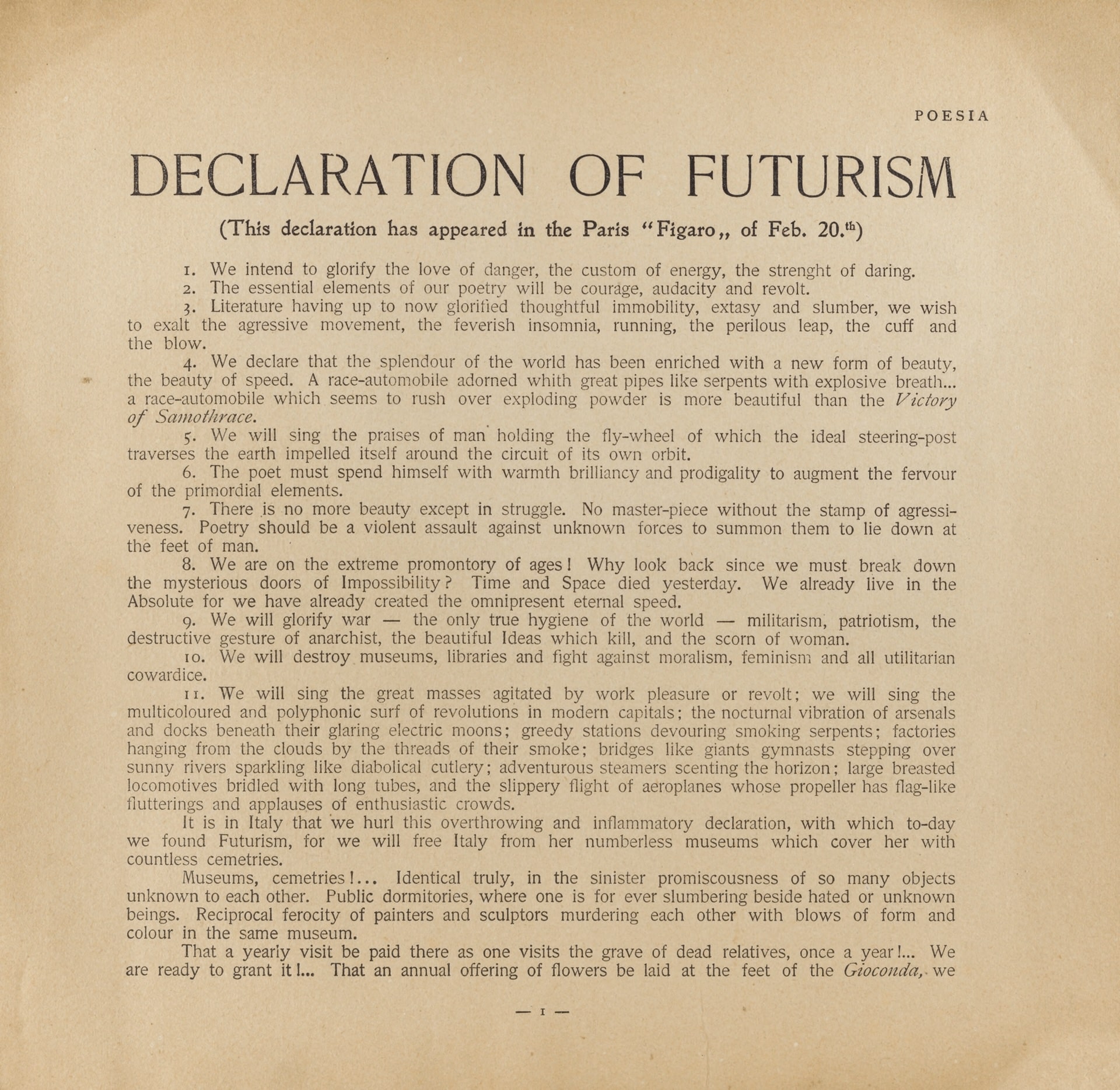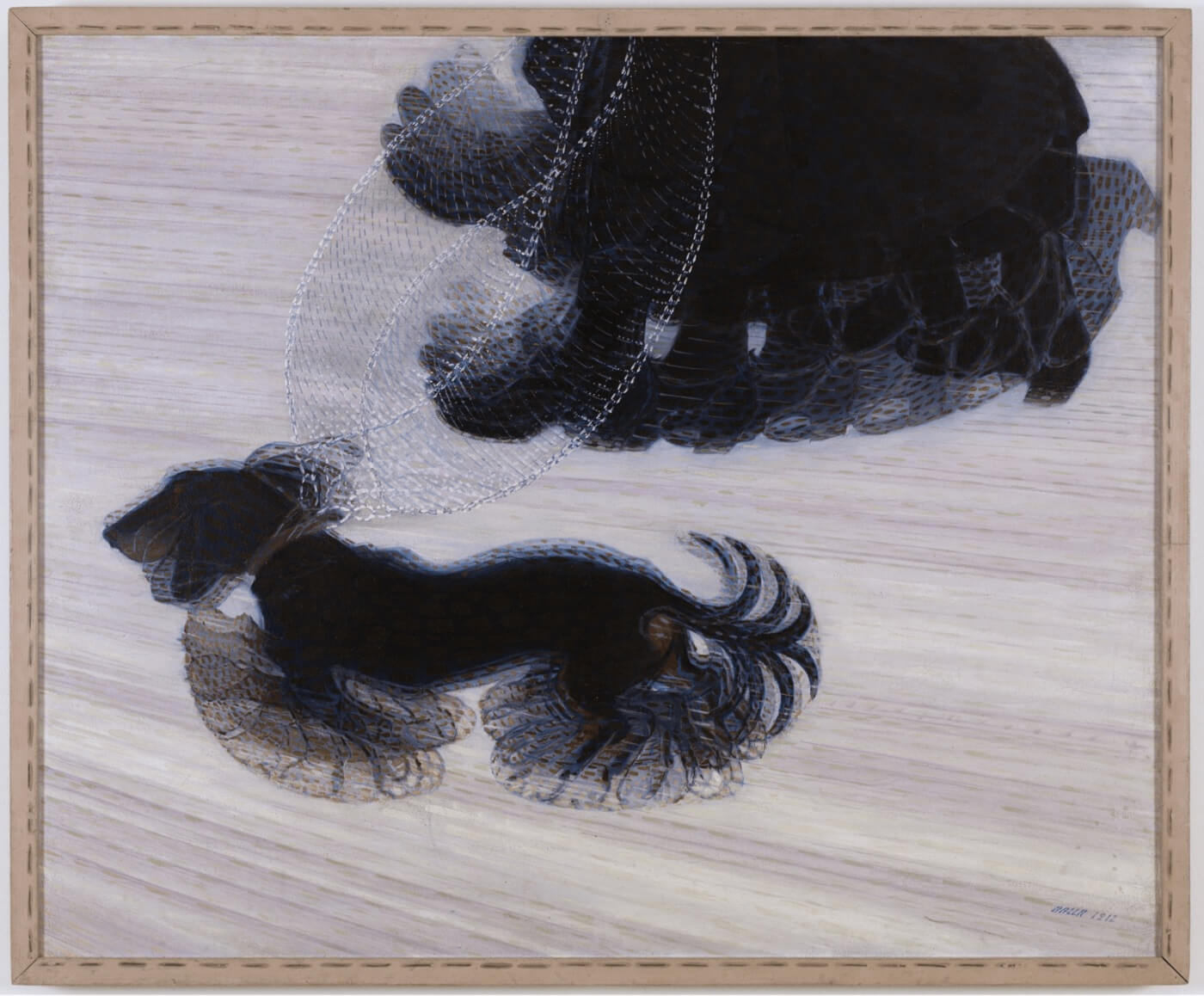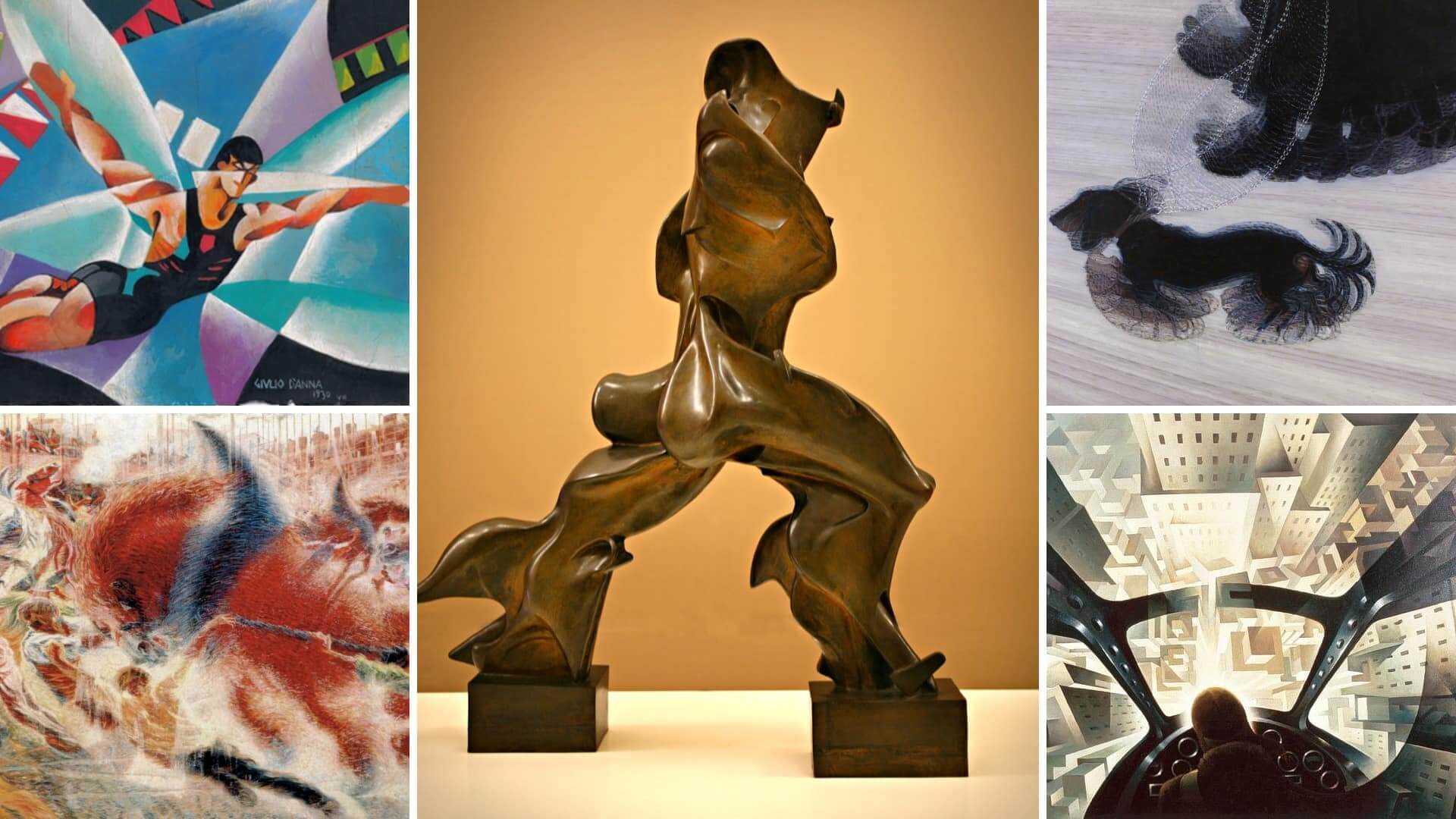What is Futurism? When you hear a word like that, you might think flying cars, robots, and whatever else comes with ideas of the future. But that’s not quite what Futurism is, especially because it was more interested in its present. An Italian art movement from the early 20th century, this article will dig into what Futurism is, the main players in the space, and notable examples, from paintings to sculpture and even a film.
Futurism Definition
Futurism in art
Here we will provide a Futurism definition, which lucky for you is not actually that cryptic because the movement came with plenty of written manifestos. This means there are a few different angles to Futurism, but we’ll stick with the main one here.
FUTURISM DEFINITION
What is Futurism?
Futurism is an Italian art movement that lasted from about 1909 to 1914. The Futurism movement was led by a group of artists (Futurists) who wanted to reject the Italy of the past in favor of an Italy of the future. This meant emphasizing movement, technology, and violence, among other things (including intense nationalism). While the main movement only lasted a few years, it had a tremendous impact on the art scene; Futurism could be found in painting, sculpture, architecture, theater, film, literature, and even cooking.
Futurism characteristics include:
- Rejection of the past in favor of the future
- Emphasizing movement through blurs and dynamism
- Embrace of technology, modernity, and national pride
Futurism Movement
The Rise and Fall of Futurism
Futurism is an inherently Italian art movement, fueled by the belief that the country had to reject its past in order to thrive in its future. This was written out in the first published manifesto – Manifesto del Futurismo – written by poet Filippo Tommaso Marinetti.
It lays out a very clear ideology that promotes speed, danger, war, and other such aggression. “...a race-automobile which seems to rush over exploding powder is more beautiful than the Victory of Samothrace.”

What is Futurism • Manifesto del Futurismo
Inspired by Cubism, the art found in Futurism emphasized movement above all, to the point where subjects are barely identifiable without context. While painting was the main form of expression for the artist of Futurism, its influence could be found in other art forms.
Music, dancing, cinema, and literature were all touched by Futurism in their own unique ways.
One example of Futurist music would be an emphasis on the sound (or noise) of machines; Futurist literature (which includes manifestos) rejected long prose (as seen in novels) in favor of shorter and compressed pieces.
What is Futurism • Futurism definition
Futurism certainly made a splash at the time. But it came to a close when World War I arrived, with many of the notable figures of Futurism enlisting. After the war, Marinetti tried to keep it going, even though some of the movement’s key figures died in the war.
What’s more, due to Futurism’s extreme nationalism and love of war and violence, it later became associated with Italian Fascism, which was not quite what the movement wanted or needed.
In any case, Futurism by this point had influenced movements that were springing up during this time, such as Dadaism and German Expressionism.
Related Posts
Futurism Painting
Notable Futurism Examples
Briefly the movement may have been, it produced some masterful works of art that are still talked about and shown all over the world. While the movement had its fair share of artists, a small few stand as the figureheads.
Umberto Boccioni is probably the most well-known artist of Futurism in the traditional sense. His works of art emphasized movement in iconic fashion, such as The City Rises (1910) and Dynamism of a Soccer Player (1913).

Futurism painting • Dynamism of a Soccer Player
He is also known for his sculpture work, the most famous being Unique Forms of Continuity in Space (1913), which was made in plaster but later cast into bronze nearly two decades later (and after the artist’s death).
Much like his other works, the shapes are vague, emphasizing movement above all else to the point where the subject cannot be recognized as human.
Not to be outdone, one other very famous Futurist painter was Giacomo Balla, who of course also emphasized movement in very unique ways. A few of his most known pieces include The Hand of the Violinist (1912), Dynamism of a Dog on a Leash (1912), and Abstract Speed + Sound (1913-14).

Futurism painting • Dynamism of a Dog on a Leash
And finally, among the literature, dancing, and cooking, there was Futurist cinema. This movement is seen as one of the earliest examples of avant garde cinema, having influenced the scene and other nations, from Germany to the Soviet Union.
However, only one film from this time period has survived: Thaïs (1917). The film notably features Futurist architecture, which would inspire the German Expressionist movement.
What is Futurism • Futurist cinema • Thaïs
Futurism did not last very long, but its influence can still be felt. While it is easy to say that its inspiration toward other art movements is how it maintains relevance, one can still look at those 1909-1914 works and be in awe at what the Italian Futurists envisioned. If nothing else, Futurism is a key component of early modern art in the 20th century.
UP NEXT
Explore More Styles and Movements
This was just one of many fascinating segments of art history. There are many eras, styles, artists, and movements to discover. Let's continue our study by choosing the next stop on your way to becoming an art aficionado. Below you can visit our Art Styles Index, our Art History Timeline, or choose an individual movement.
Share your vision with elegant shot lists and storyboards.
Create robust and customizable shot lists. Upload images to make storyboards and slideshows.
